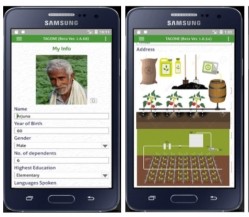SSCI progress includes pilot audits to test standardized tools, redesigned app for farmers

The progress on SSCI, as the initiative is formally known, was presented to stakeholders at a meeting earlier this month in connection with the Natural Products Expo East trade show. A snapshot of where the initiative stands was provided to NutraIngredients-USA by Daniel Fabricant, PhD, president and executive director of the Natural Products Association. NPA is spearheading the effort with the cooperation of big retailers like GNC and Walmart. Others, like Vitamin Shoppe and Whole Foods Markets have played a role, too, Fabricant said.
Major trend for 2018
Earlier this year, NutraIngredients-USA identified SSCI as one key transparency trend in the industry for 2018. Other key initiatives include the Botanical Adulterants Prevention Program, the Supplement Owl, the Botanical GMPs program managed by the American Herbal Products Association and others.
The goal of SSCI was to simplify compliance with GMP requirements by developing a standard against which various auditing programs can be judged, putting some parameters and bringing some standardization to how information is collected from suppliers, etc. With thousands of suppliers spread across the globe, the effort has not been a trivial one, Fabricant said. The goal is to build a robust tool that will stand the test of time. Getting that done fast is a lesser consideration, he said.
Audit standardization progress
To date, four pilot audits of facilities have been done using the audit tools developed by SSCI, Fabricant said.
“Progress has been significant. We’ve conducted pilot audits at 4 facilities using the standardized audit tools by three different certification bodies using auditors with a wide range of experience. This was not a trivial exercise. Folks can gather in a room and come out and claim that they have the best standard/best tools but how do you know unless you test it where the system really works no matter who is using it. That’s the main feature of SSCI, we aren’t a certifier we’re building an architecture where anyone can submit their certification scheme and have it benchmarked so all stakeholders, manufacturers, retailers and consumers alike know that it measures up no matter who is doing the certification,” he said.
Fabricant said some important things were learned in this process, about where the audit assessment tool is fit for purpose and where it needs more work. That is part of a credible validation process for the standard, he said.
“You can’t be your own third party and say that it is valid – because you said so or had a meeting. You really need to go ahead and go the extra mile and keep moving forward with that data,” he said.
“We aren’t going to rush it, but still, the sooner the better. Consumers want to have that trust in the products sitting on shelves. That is our responsibility. In order to do that, we need to engage the entire industry, and we would like to see it done in a collaborative fashion from raw material manufacturing to the finished product on the shelf,” he said.
Redesigned app for farmers
In addition to progress made on the auditing process, more work is being done on the supply end. The initiative had developed a mobile app for farmers so that the nature of their operations could be captured in the process. For botanical ingredients in particular, the supply chain is at it base formed of hundreds of thousands of small family plots. At the moment the industry relies on aggregators, suppliers, extractors and so forth for information about that level of the supply web. Getting these apps into the hands of farmers would increase transparency by making that information about how these people are and how they conduct their operations more widely available.
But the first go round of the app was judged to be too complicated and not really tied in well enough with the farmers’ needs, Fabricant said. A revised, simplified version was presented at the meeting in Baltimore.
“We set out to develop what we call ‘The Farmer App.’ As we worked on this and we got the app to a nice place, we realized that we designed this app for ourselves, not the farmer. There were lots of good learnings, but we needed to recalibrate it, which is in process,” he said.
“We are currently working on getting this database developed into Hindi, Mandarin, and Spanish. There are traceability systems being put into place to determine how the farming happened, and right up to the sale to the regional consolidator,” he said.
Building on proven success of food initiative
Fabricant said there has been significant buy-in on the part of industry. While there is not universal agreement that an effort this major is necessary, Fabricant said it will provide a big arrow in the self regulatory quiver, one the industry could pull out in the face of a future NYAG-type challenge.
“Our goal is to have all certification bodies out their submit certification schemes for benchmarking so there is competition in the marketplace around continuous improvement.That’s how the industry distinguishes itself. If we were to have another NYAG-style attack on the industry, it’s not for the certifiers to hit back. Its for an organization like SSCI to present the data that it’s found in aggregate so all know what the real story is when it comes to product quality,” he said.
Fabricant said that the initiative is deliberately modeled on a successful progenitor: GFSI, or the Global Food Safety Initiative, which was launched in 2000.
“GFSI structure & methodology has proven to be very effective. You seldom hear food safety being questioned. But with dietary supplements, this has not been the case, and it has impacted consumer trust,” he said.
















